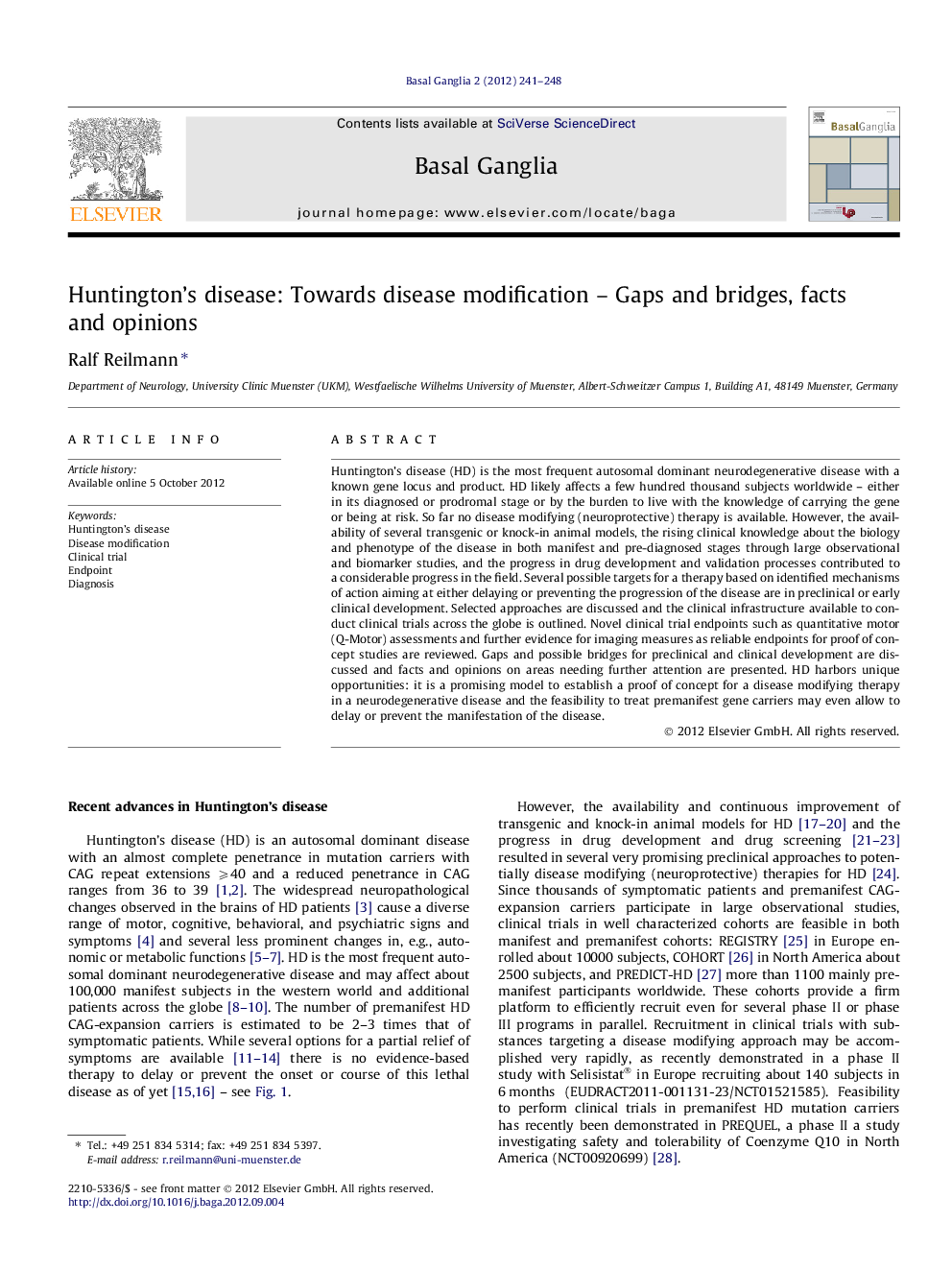| Article ID | Journal | Published Year | Pages | File Type |
|---|---|---|---|---|
| 3036268 | Basal Ganglia | 2012 | 8 Pages |
Huntington’s disease (HD) is the most frequent autosomal dominant neurodegenerative disease with a known gene locus and product. HD likely affects a few hundred thousand subjects worldwide – either in its diagnosed or prodromal stage or by the burden to live with the knowledge of carrying the gene or being at risk. So far no disease modifying (neuroprotective) therapy is available. However, the availability of several transgenic or knock-in animal models, the rising clinical knowledge about the biology and phenotype of the disease in both manifest and pre-diagnosed stages through large observational and biomarker studies, and the progress in drug development and validation processes contributed to a considerable progress in the field. Several possible targets for a therapy based on identified mechanisms of action aiming at either delaying or preventing the progression of the disease are in preclinical or early clinical development. Selected approaches are discussed and the clinical infrastructure available to conduct clinical trials across the globe is outlined. Novel clinical trial endpoints such as quantitative motor (Q-Motor) assessments and further evidence for imaging measures as reliable endpoints for proof of concept studies are reviewed. Gaps and possible bridges for preclinical and clinical development are discussed and facts and opinions on areas needing further attention are presented. HD harbors unique opportunities: it is a promising model to establish a proof of concept for a disease modifying therapy in a neurodegenerative disease and the feasibility to treat premanifest gene carriers may even allow to delay or prevent the manifestation of the disease.
